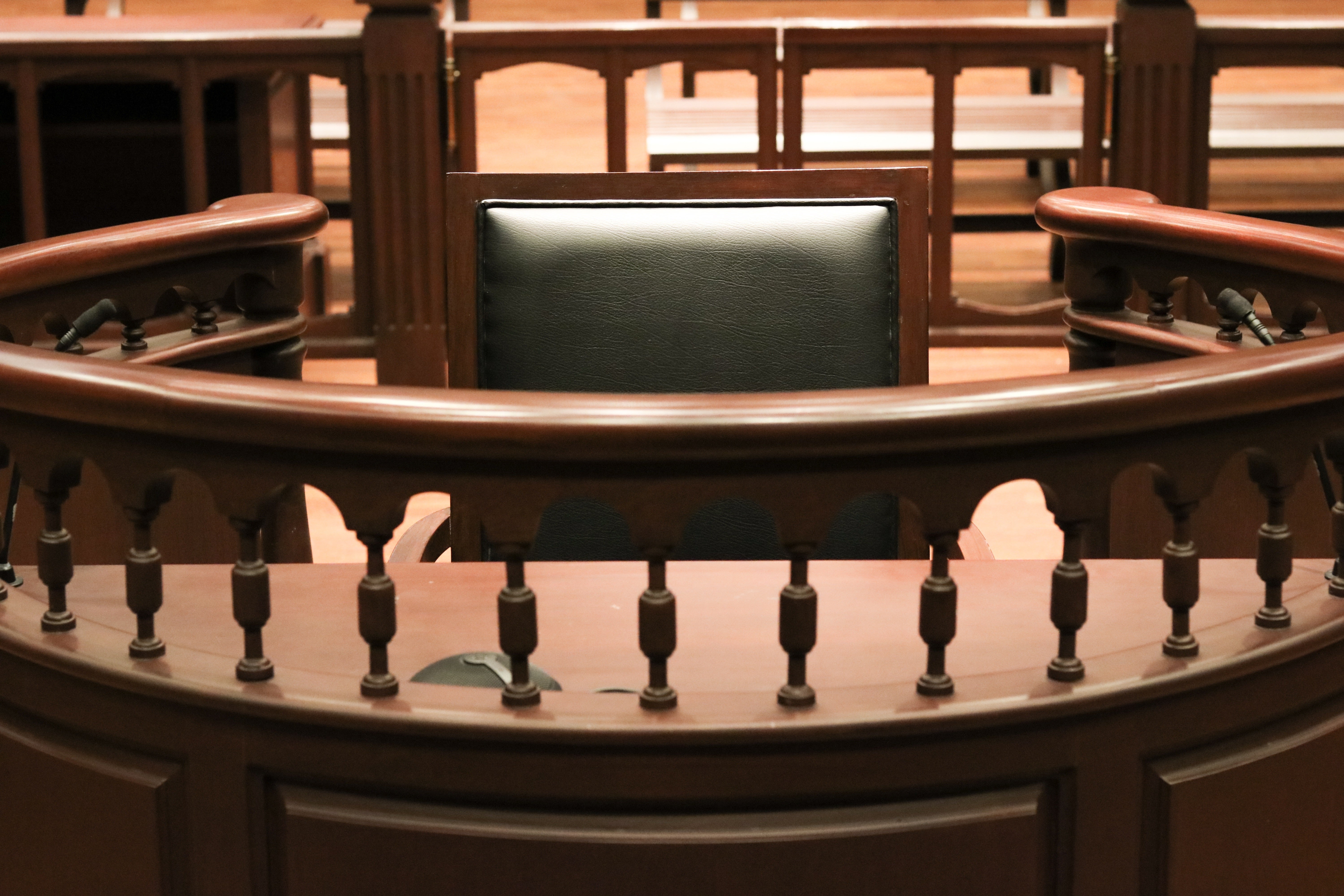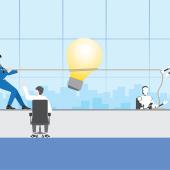Banner artwork by Trueffelpix / Shutterstock.com
In 30 combined years of practicing intellectual property law, usually patent disputes, we’ve learned that these fights are unique in their combination of complexity, duration, and the necessary commitment of both personnel and capital. It is expensive to fight over patents, and the interruption to a business and its people is significant. Good counsel involves preparing for the battle, but preparation will only go so far if it isn’t coupled with a good bedside manner. These two principals will guide the company and its stakeholders into patent litigation and out the other side intact.
From demand letters through trial, consistent reminders about goals, as well as the process and perspective of experience, can lessen the stress and lighten the load. This helps everyone maintain the sanity needed for a successful outcome. After all, panic, fatigue, and impatience are just as dangerous as your opponent in an IP dispute.
Will we have to file a lawsuit?
Yes, probably. As the patent owner, your pursuit of a payment for infringement, or an agreement with your competitor to stop infringing, is unlikely to happen without filing a complaint. The pre-litigation dance is frequently done, and almost as frequently ends in frustration and a complaint filed in district court. If your demand is significant, the likelihood of successful resolution without litigation drops to zero.
This does not mean there aren’t good reasons to do the dance, e.g., establishing professional communication and mutual respect and learning information you may not otherwise obtain until months into litigation, etc. But you would do well to understand that the reasons for dancing should not include resolving the dispute quickly and easily.
Good counsel will not only prepare you for this inevitability, but they will also remind you of the expected outcome when your competitor, upon receiving your pre-litigation letter, tells you to go “pound sand.”
How long will this take?

Years. In most cases, long before trial, when you file a lawsuit, you must be prepared to see it through to the end. Patent cases are complex and often involve dense technology like semiconductors, pharmaceutical compounds, or artificial intelligence. The parties and judges frequently agree to lengthy case schedules to accommodate voluminous discovery and procedures unique to patent law, like claim construction, which is a process by which the court interprets certain words in the patent, which can help a jury better comprehend the technology at issue.
While it takes years to litigate a patent case through trial, the actual expected time to trial varies greatly by venue. For example, in 2021, the average time to trial for a patent case in the Western District of Texas is 2.3 years, yet the average time in the District of New Jersey is 6.5 years.
Understanding the average time to trial for different venues may influence where you file your case and will help prepare you for the long haul by allowing you to set expectations within the company. Your counsel’s good bedside manner will gently remind you of the expected timelines when you or your stakeholders grow understandably weary of the process.
Are there any off-ramps?
Yes, of course, but not as many as you might think. Once you’ve done your homework, danced the pre-litigation dance (or not) and filed your lawsuit, it may be unwise to walk away without justification through judicial disposition or settlement. Dropping a case is something people often talk about in the movies, but dropping a case in real life can have consequences. Hauling a competitor into court, alleging patent infringement, only to drop the lawsuit a few months later, after the sledding gets tough or the company has moved its focus elsewhere, may expose the company to a motion for attorneys’ fees brought by an aggrieved defendant that had to pay to defend itself.
Dropping a case is something people often talk about in movies, but dropping a case in real life can have consequences.
Good preparation means understanding the off-ramps in a patent case, which may include claim construction (if the court decides words in the patent have favorable meanings), winning a motion to compel sensitive discovery, or summary judgment. A good bedside manner is a reminder of these realities and directing effort toward those off-ramps.
How much will it cost?
Millions of dollars. We’re serious — there is no way to sugarcoat it.
Patent litigation typically has two expense components: legal fees and costs. Fees are what you pay your outside counsel, and costs are what you pay for the other services attendant to litigation, like expert witness fees, e-discovery charges, court reporter fees, and the like. Fees may depend on the combativeness of your opponent. For example, an aggressive defendant might increase the motion practice or increase the burden of counsel correspondence.

Suing a competitor can also invite counterclaims, which in turn may increase the expense, and risk, of litigation. If your competitor has patents, or some other bone to pick, you could find yourself a defendant as well as a plaintiff. Preparing for battle means self-scouting weaknesses by knowing your competitor’s portfolio and assessing risk. Good outside counsel will give you the tools to inform the company of this potential risk and provide a plan to address it, long before filing suit.
Preparing for battle means self-scouting weaknesses by knowing your competitor's portfolio and assessing risk.
There are also indirect expenses to consider. A lawsuit necessarily means witnesses. These include stakeholders at the company, like inventors, marketing and sales executives, and product managers, who will need to testify during depositions — and maybe at trial — about your patent, your products that practice the patent, and the market in which the products compete. Testimony takes time to prepare, and these executives will be distracted from their valuable contributions to the company. Those distractions can have an outsized impact on the bottom line. Prepare by having an idea about potential witnesses in advance and getting their buy-in early. A good bedside manner is most important in guiding non-lawyers through the litigation process, which can be intimidating and downright scary.
How can the in-house/outside counsel relationship be most effective?
Regular communication between the in-house and outside counsel is key to success. No one can know everything that will happen through a patent case; surprises are guaranteed. But we can know a lot. Have conversations about the process early and often. Understand expectations within the company and define successful outcomes.

One of the early conversations, as well as ongoing ones, will focus on goals. Questions asked should include:
- Does the client want money to compensate it for the infringement? If so, does the defendant have enough money to pay?
- Would the client consider getting the defendant to pay royalties to use the IP to be a worthy goal, or does the company simply want to stop the infringing behavior?
- Would the client consider buying the defendant or selling itself to the defendant to either stop the infringement or be compensated?
They also will need to determine which issues and actions require in-house counsel review and approval.
Overlooked considerations for in-house counsel
A good bedside manner is not only for outside counsel. While outside counsel will generally handle most day-to-day litigation tasks, some specific issues are unique for in-house counsel. As an in-house intellectual property counsel, you will likely have to interface with both your outside counsel and internal team. A good in-house counsel will be able to coach his or her general counsel on some nuances specific to patent law.
When defending a patent lawsuit, in-house counsel should work with their general counsel to determine whether a countersuit could be filed. A company’s own patent assets may be useful for a countersuit against the plaintiff if the plaintiff is an operating company. However, for lawsuits filed by non-practicing entities (i.e., companies that do not make or sell anything but exist exclusively to hold and enforce patent rights), your own assets will not be useful in countersuing for infringement.
As an in-house intellectual property counsel, you will likely have to interface with both your outside counsel and internal team.

Additionally, when defending a patent lawsuit, in-house counsel should work to help identify employees who will act as a witness on behalf of the company. While many employees may understand the technology at issue, an in-house counsel should also consider an employee that would feel comfortable giving testimony and will represent the company well. A lot of internal stress may be avoided by making considerations for both the witness’s personality and technical understanding.
Is there anything else to know?
Occasionally entrepreneurs or top executives attribute their success to an aggressive take-no-prisoners approach. Often those executives want their outside counsel to mirror those behaviors. This is not usually the best way to approach patent cases.
There is certainly a time and a place for zealous advocacy, but patent cases, perhaps more than any other, are cerebral chess matches. A combative attitude rarely increases the likelihood of a win, but it almost always increases expense. Contentiousness breeds contempt. An opposing counsel who is insistent on taking no prisoners is more likely to receive that treatment in kind and, before too long, one or both parties will draw the judge’s ire.
Encourage your counsel to be a zealous advocate that wants to win, but win with integrity and civility and, overall, a commonsense approach. More often than not, this attitude will be returned in kind, and the adversarial system we have can be as efficient and effective as possible.





